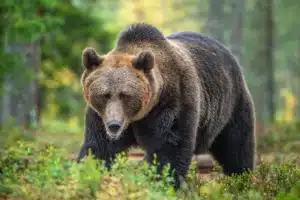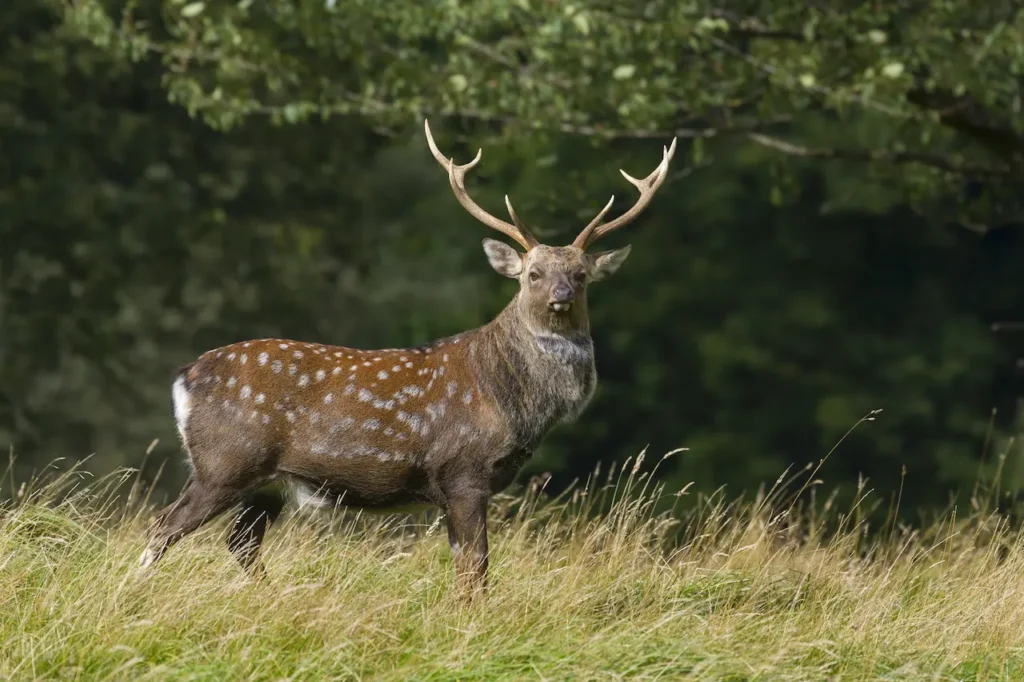Sika deer fact file
The
Sika deer fact file
Identification tips – hinds can be easily confused with roe deer because of their similar size and coat colour – a gingery-red in summer turning to a greyish-brown in the winter months. Stags tend to be a much darker brown, with a scruff of hair on the front of the neck. Sika’s often have pale spots either side of a dark stripe running along the spine. When the spots fade in winter the line of darker hair remains. A white rump is also a distinguishing feature.
Sika stags have branched antlers typically with four points each side.
Preferred habitat – open heathland and woodland. They like to be close to wetland areas, making the New Forest bogs an ideal place to find them.
Diet – grasses, heather and low shrub make up most of the diet. They will also feed on low-hanging tree branches and fresh shoots, as well as fallen nuts, berries and acorns. A small proportion of fungi is also consumed.
Breeding – The deer mate in late summer and give birth to a single calf the following May/June. Sika calves develop quickly and are fully independent of the mother within 7 to 10 months.
Other points – British Sika deer are of Japanese origins, and apparently the ones of the New Forest are descendants of a pair of Sika deer that escaped from the Beaulieu Estate in the early 1900s!
They are relatively few in number and stay in the southern half of the Forest, around the Brockenhurst area. If you ever see one there, let me know!
Related Sites

Rugged Looks Built for Park Terrain
Whether you’re driving winding forest roads or parked at a trailhead surrounded by mossy oaks and chirping robins, your truck says a lot about your adventure style. For many outdoor enthusiasts, function comes first—but that

Planning Safe Camps
Setting up camp in remote locations is the kind of adventure many dream about—off the grid, fresh air, starry skies. But anyone who’s tried it knows there’s a fine line between a fun escape and

How to Find the Most Beautiful Secret Hotels
If you’re craving a luxurious, quiet retreat away from the hustle and bustle, a secret hotel might be the getaway you need. You can check into a hidden spot in an atmospheric city, a gorgeous

The Most Thrilling Shore Excursions
Do you want to know about the most thrilling shore excursions? If you’re after an action-packed escape on the British coast, New Forest National Park really does deliver some of the wildest shore excursions for

Explore the Wildlife in the UK
Great Britain is renowned for its architectural, historical, and cultural attractions. However, when it comes to natural rarities, many of us do not consider this country first, but neighboring Scotland and Wales. This is, in

Most Visited Tourist Attractions in UK
The UK has a variety of world-renowned attractions. These range from museums to historic landmarks, and include natural wonders as well. This list includes some of the UK’s most popular tourist attractions, which attract millions of

